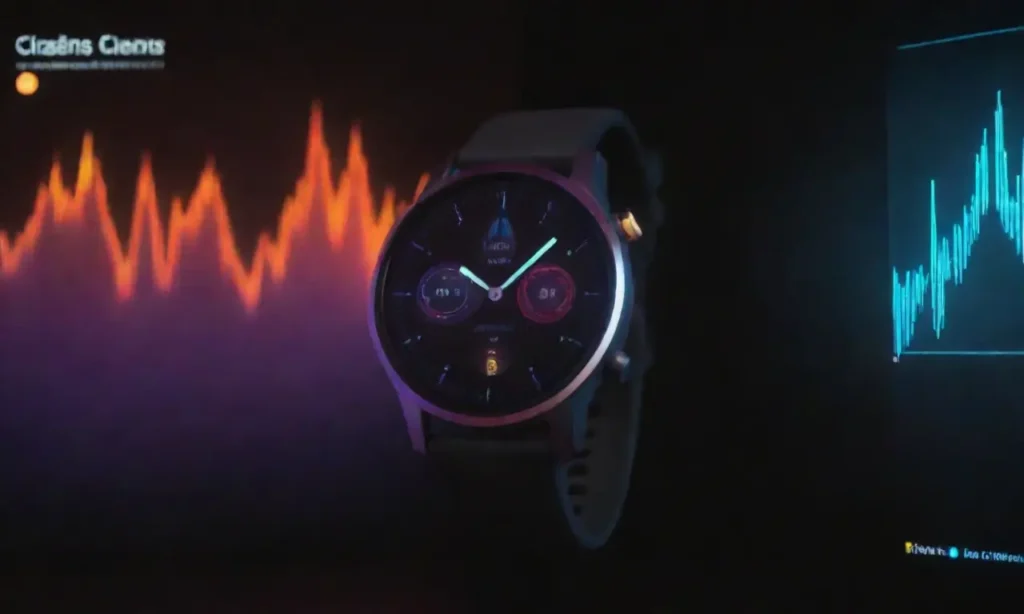
Cutting-Edge Machine Learning Tools for Health Monitoring Wearables

Introduction
In today’s fast-paced digital landscape, health monitoring wearables have become an indispensable tool for individuals seeking to enhance their health and well-being. These devices, which range from smartwatches to fitness trackers, leverage cutting-edge machine learning technologies to provide invaluable real-time health insights. The intersection of advanced algorithms and wearable technology has opened new avenues for personal health management, offering users the ability to track fitness levels, monitor vital signs, and even predict potential health issues.
In this article, we will delve into the fascinating world of machine learning tools that are transforming health monitoring wearables. We will explore how machine learning algorithms are integrated into these devices, examine various applications, and discuss the implications of their use. By the end of this piece, readers will have a comprehensive understanding of the technology driving health monitoring wearables and the potential benefits they provide.
The Role of Machine Learning in Health Monitoring
Machine learning has revolutionized the way data is processed and interpreted in various fields, and healthcare is no exception. In the realm of health monitoring, machine learning algorithms analyze vast amounts of data collected from wearables to deliver personalized insights. These algorithms can identify patterns that might not be immediately visible to human analysts, making them exceptionally powerful tools in healthcare applications.
The data collected by wearables includes everything from heart rate and blood oxygen levels to activity intensity and sleep quality. By applying machine learning, these devices can detect anomalies and trends in this data, allowing for proactive health management. For instance, if your fitness tracker notices a consistent surge in your heart rate during your daily activities, it may signal potential cardiovascular issues, prompting you to seek medical advice.
Moreover, machine learning enhances the accuracy of health predictions. Traditional wearable devices might give general fitness advice based on set thresholds, but those imbued with machine learning can tailor suggestions based on a user’s unique health history and lifestyle patterns. This shift from generalized to personalized health monitoring opens a door to more effective preventive healthcare.
Innovations in Wearable Technology
As the wearables industry evolves, so too do the innovations powered by machine learning. Previously limited to simple activity tracking, modern wearables now integrate complex algorithms that can analyze physiological signals deeply. For example, advancements in sensor technology allow wearables to detect not just whether a user is active, but also the intensity and quality of that activity, including nuances such as sleep stages and recovery rates.
Advanced Data Analytics
The use of advanced data analytics is a hallmark of modern health monitoring wearables. By employing machine learning techniques such as neural networks, wearables can learn from user data over time. These networks can make predictions about future health states based on previous patterns, creating models that adapt to changes in the user's routine, stress levels, and even diet.
Machine learning can also be utilized to segment populations for more accurate assessments. For instance, wearables can use clustering algorithms to group users by similarities in their health metrics which can assist in the identification of trends across different demographics. This capability is instrumental in public health monitoring, allowing health organizations to identify and respond to trends before they escalate into public health crises.
Human and Environmental Interaction
Another astonishing innovation is the integration of environmental data to improve health monitoring. Modern wearables don’t just capture biofeedback from the user; they can also account for external factors like weather conditions, UV exposure, and pollution levels. These data points can influence a user’s health, and adding them to the machine learning models can significantly enhance the accuracy and relevance of the feedback provided.
For instance, if a user is exercising outdoors in high humidity or air pollution, the wearable may suggest reduced activity or altering the workout plan to prevent health risks like dehydration or respiratory issues. Such context-aware feedback empowers users to make informed decisions about how and when to engage in physical activity, ultimately promoting better health outcomes.
Applications in Chronic Disease Management

Health monitoring wearables have become particularly beneficial for individuals managing chronic diseases such as diabetes, hypertension, and heart conditions. By continuously monitoring essential health metrics, these devices can serve as vital tools for management and prevention.
Real-Time Monitoring
One of the primary advantages of wearables is real-time monitoring. Machine learning algorithms can process incoming data almost instantaneously, flagging any alarming changes in metrics such as glucose levels in diabetic patients or blood pressure for those at risk of hypertension. Alerts can be sent directly to the user or even shared with healthcare providers, allowing for quick interventions when needed.
For example, smart insulin pens can now be integrated with wearables to track glucose levels and log insulin doses in real-time. Machine learning can analyze this data to recommend insulin doses, anticipate spikes in blood sugar, and provide dietary recommendations tailored to the individual user. This kind of responsive health management can significantly reduce the risk of complications associated with chronic illnesses.
Predictive Health Insights
Another promising application of machine learning in wearables is the ability to offer predictive health insights. By analyzing historical data from the user and similar profiles, machine learning models can identify risk factors for various chronic diseases. This predictive capability enables early interventions, such as lifestyle changes aimed at reducing risk factors, ultimately improving overall health.
For example, a wearable device might note a user’s increasing sedentary behavior combined with rising blood pressure readings. The machine learning algorithm can then flag this trend and suggest modifications to the user's daily routine or alert a healthcare provider to the potential risks. Such preemptive strikes against health issues can transform how chronic diseases are managed, shifting the focus from reactive treatment to proactive health maintenance.
The Future of Health Monitoring Wearables
The future of health monitoring wearables is bright, as advancements in technology and machine learning continue to evolve. The potential for deeper integration within healthcare systems and improved collaboration between wearables and healthcare providers could reshape personal health management significantly.
Enhanced Interconnectivity
As the Internet of Things (IoT) expands, we anticipate a future where wearables will interconnect with various devices, creating a holistic view of an individual's health. For instance, wearables could synchronize with smart home technology to monitor environmental conditions, adjusting settings in real-time to enhance user comfort and safety. Imagine wearables that could communicate with home heating systems that respond to health data, ensuring optimal air quality when respiratory issues are detected.
Personalized Health Ecosystems
Moving towards personalized health ecosystems, wearables will increasingly utilize artificial intelligence and machine learning to tailor health interventions uniquely suited to the individual. These ecosystems could integrate data from multiple sources—such as medical history, fitness routines, diets, and even genetic information—to create comprehensive health profiles. Healthcare providers could then utilize this information for more precise interventions, improving the overall quality of care.
Telehealth Integration
As telehealth becomes more prevalent, health monitoring wearables will play a critical role in providing continuous data flow between patients and healthcare providers. Machine learning tools can analyze data from these devices and use it to refine patient assessments and treatment recommendations, leading to more personalized, efficient healthcare experiences. This combination can shorten the time from diagnosis to treatment, improve recovery rates, and enhance the patient experience.
Conclusion
The realm of health monitoring wearables empowered by machine learning is an exciting and rapidly evolving field with the potential to revolutionize personal healthcare. Through advanced data analysis, real-time feedback mechanisms, and predictive health insights, these devices offer unparalleled opportunities for individuals to manage their health proactively.
As we continue to witness innovations in sensor technology and machine learning algorithms, the future holds the promise of even more capabilities. The integration of wearables within the broader healthcare ecosystem will likely lead to more customized, responsive healthcare solutions that can address users' unique needs.
Ultimately, the convergence of technology, machine learning, and healthcare signifies a shift towards smarter, more effective health management strategies. As these tools evolve, they empower users not just to track their health metrics but to understand their body’s signals, take control of their wellness journeys, and engage in informed decision-making, paving the way for a healthier future for all.
If you want to read more articles similar to Cutting-Edge Machine Learning Tools for Health Monitoring Wearables, you can visit the Health Monitoring Wearables category.



You Must Read